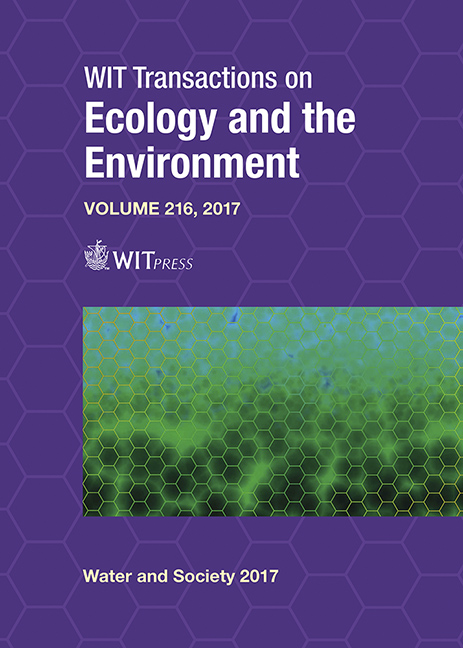EXPERIMENTAL INVESTIGATION OF COPPER REMOVAL FROM AQUEOUS SOLUTION USING MUSA PARADISIACA AS A NOVEL ADSORBENT
Price
Free (open access)
Transaction
Volume
216
Pages
7
Page Range
173 - 179
Published
2017
Paper DOI
10.2495/WS170161
Copyright
WIT Press
Author(s)
PRAISEGOD CHIDOZIE EMENIKE, DAVID O. OMOLE, BEN U. NGENE, IMOKHAI T. TENEBE, OMEJE MAXWELL
Abstract
The adoption of agricultural waste materials in the removal of heavy metals from contaminated waters has gained more recognition in recent times. This study capitalizes on the production of adsorbents from one of the predominant agricultural waste materials (Plantain Peel) in Ado-Odo Ota, to access its metal-removal efficiency. This work investigated Cu2+ adsorption using activated carbon processed from chemically modified unripe plantain (Musa paradisiaca) peel. Adsorption studies were performed using batch experiments wherewith the influence of pH of the solution, initial concentration, temperature and contact time have been cross-examined. The results displayed a 99.8% removal efficiency of Cu2+ at pH 7.5, 30°C and 150 mg/L concentration. The equilibrium adsorption capacity of unripe Musa paradisiaca peel has been obtained using linear models of Langmuir and Freundlich isotherms. The result is poised to elucidate the metal retention mechanism as a process involving ion exchange as the divalent metal ion binds to the activated unripe plantain peel.
Keywords
plantain peel, copper, heavy metal, adsorption, activated carbon





